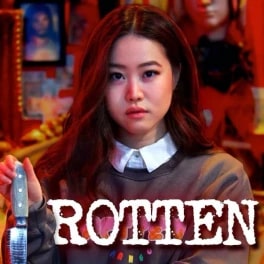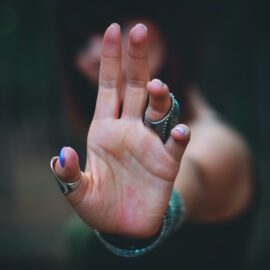

This article is an excerpt from the Shortform guide to "Rotten Mango". Shortform has the world's best summaries and analyses of books, podcasts, and more.
Like this article? Sign up for a free trial here.
What was Cheongju’s curling iron incident of 2006? What does the crime say about bullying in South Korean schools?
Stephanie Soo’s podcast Rotten Mango dives into the troubling instances of school bullying in South Korea. It’s a critical issue exemplified by the 2006 Cheongju curling iron case, which inspired the popular Netflix series The Glory.
Continue reading to learn more about the horrific case and its controversial aftermath.
Revisiting the 2006 Cheongju Curling Iron Case
The Rotten Mango podcast meticulously details the brutal 2006 Cheongju curling iron case, including a horrific incident where the victim was burned with a curling iron, leaving her with permanent scarring.
Stephanie Soo’s skepticism extends beyond the dismissive bicycle accident theory, as she challenges the plausibility of such an explanation against the backdrop of such heinous acts of violence.
Discussing the Epidemic of School Bullying in South Korea
Through recounting multiple victims’ stories, Soo sheds light on the widespread problem of bullying and the complexities involved when true perpetrators manipulate victims. As in the case where Student 2 was coerced into falsely accusing three innocent classmates, illustrating not only the severity but also the psychological manipulation inherent in such cases.
Reviewing the South Korean Legal and Educational System’s Response
Additionally, Soo highlights the inadequacies in the South Korean legal system and education authorities’ lack of accountability. She criticizes the superficial measures such as installing low-resolution CCTV cameras around schools, which fail to accurately identify individuals, thus proving ineffective in preventing or resolving episodes of violence.
She reveals the moment the extent of the bullying was acknowledged by school officials and parents, which occurred only after the teacher’s discovery of the victim’s severe arm injury. Soo also discusses the profound effect of bullying including an attack on a student causing lasting damage to her vision, emphasizing the serious physical consequences of these attacks.
Context
In South Korea, school bullying has long been a pervasive issue with serious physical and psychological consequences for its victims. To fully grasp the context of a recent news article, it’s important to understand the historical backdrop of school bullying in the country. One notable incident that sheds light on the prevalence and severity of this problem is the 2006 Cheongju curling iron case. In this particular incident, a victim was brutally burned with a curling iron by their classmates, resulting in permanent scarring. This case serves as a stark reminder of the manipulation and cruelty often exhibited by perpetrators of school bullying.
To further comprehend the complexities surrounding school bullying in South Korea, familiarity with popular cultural references is beneficial. The Netflix series The Glory has gained significant attention for its portrayal of instances of school bullying within Korean society. Additionally, Stephanie Soo, a well-known podcaster, delves into various topics including the Cheongju Curling Iron Case in one episode. These references provide additional insights into both real-life incidents and fictionalized accounts that shed light on different aspects of this pressing issue.
The themes explored in discussions about school bullying extend beyond individual incidents to highlight systemic inadequacies within South Korea’s legal and educational systems. The article emphasizes how these shortcomings contribute to an environment where bullies can manipulate their victims without facing appropriate consequences. Moreover, it underscores how such mistreatment can have lasting impacts on victims’ mental health and overall well-being.

———End of Preview———
Like what you just read? Read the rest of the world's best guides to Rotten Mango" at Shortform.
Here's what you'll find in our full Rotten Mango episode summaries:
- Shocking true crime stories from around the world
- Cases ranging from obscure incidents to infamous crimes in history
- Key facts about each topic that help you connect to the story






